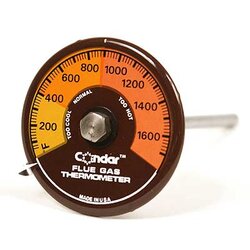KeithO
Minister of Fire
jeffman3 said:If this is over-fire, then Hearthstone has misrepresented the over-fire condition in the tech bulletin, and the manual, as this stove has never exceeded the limits there in, measured by the means they recommend in the manual.
This is exactly what I have been suggesting all along. You can't rely on a surface thermometer to avoid damage to your stove, particularly one made of soapstone. There are important design differences between Woodstock and Hearthstone stoves that are responsible for differences in durability. 1) Woodstock chose a catalyst system that allows the fire to burn at a lower smoldering temperature for extended burns. 2) Woodstock typically has 2 layers of thinner stones compared to Hearthstones single layer thicker stones. By having 2 layers of soapstone, the stresses on the soapstone is dramatically reduced since the temperature gradient across a single layer is halved. Add to this the lower internal temperature from point 1 and one has a good case for a durable stove.
I have examined Hearthstone stoves before I bought the T5 and I was not encouraged by the workmanship on the Hearthstone stoves, which is why I stayed away. The statement by Woodstock regarding the cost of a replacement catalyst compared to a warped firebox is particularly poignant in the context of this thread. I would have loved to buy a Woodstock stove, but the clearances make it impossible in my home. I have corresponded with Woodstock with an offer to assist with development of more effective shields to permit tighter clearances, but the company was not interested. Apparently they have sufficient customers who find the present clearances acceptable. In future, as the economy and energy costs drive smaller homes, this is going to become a more and more significant problem that I hope Woodstock will address.
Jeff, I am sure all of us who have followed this thread hope that you will at least get your Heritage rebuilt without a massive financial outlay. I encourage you to fit both a stack damper and the probe type thermometer before operating the rebuilt stove and use the flue thermometer as your guiding principle. If nothing else, this will certainly avoid damage to your rebuilt stove so that you have the option of selling it and getting a more suitable stove next season.



